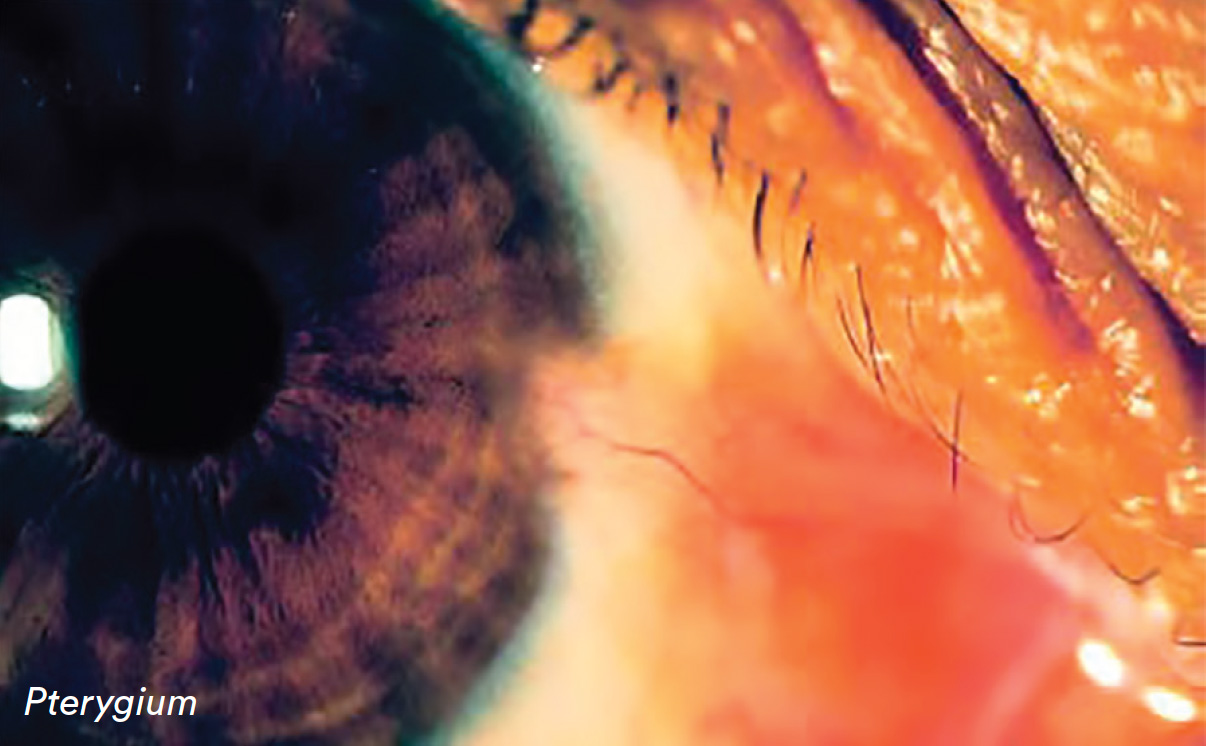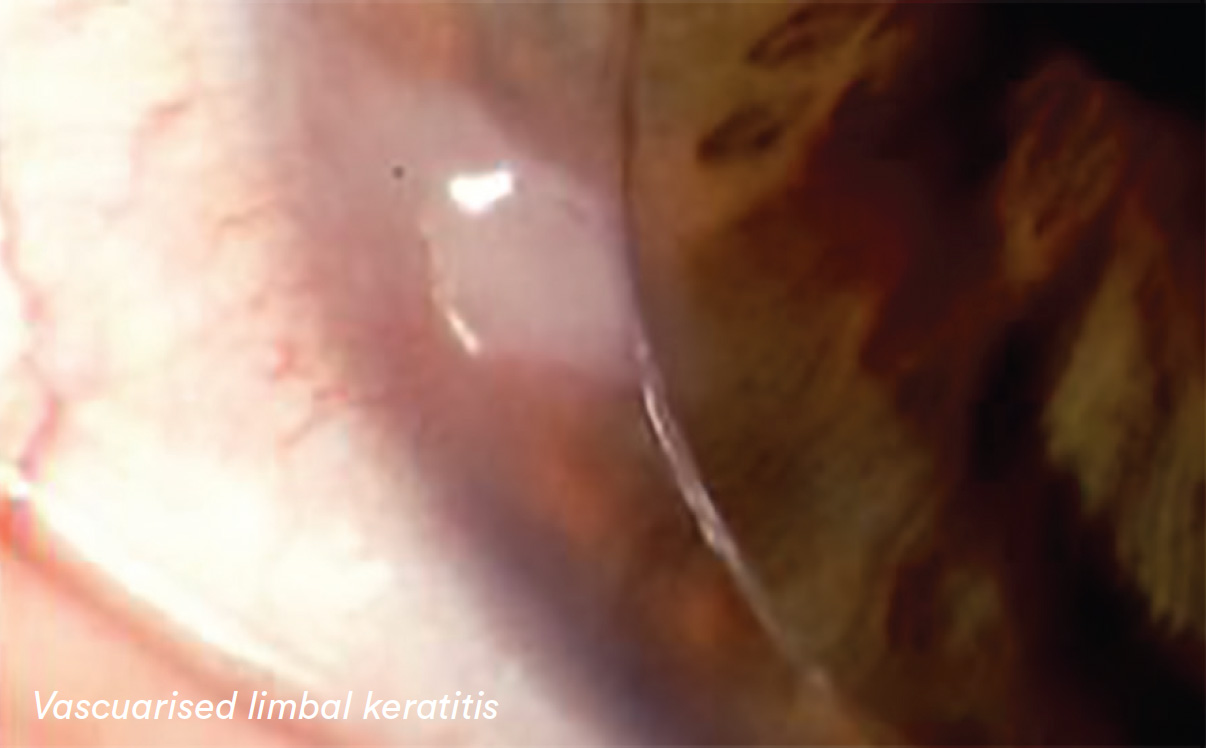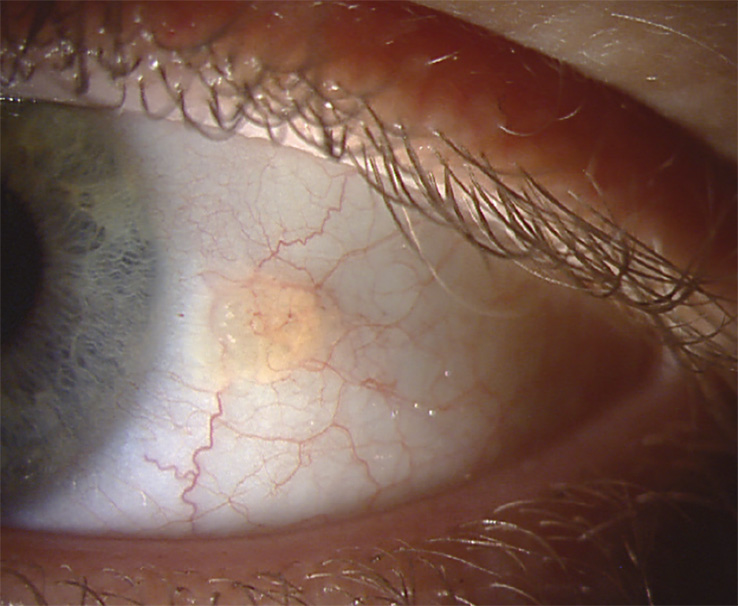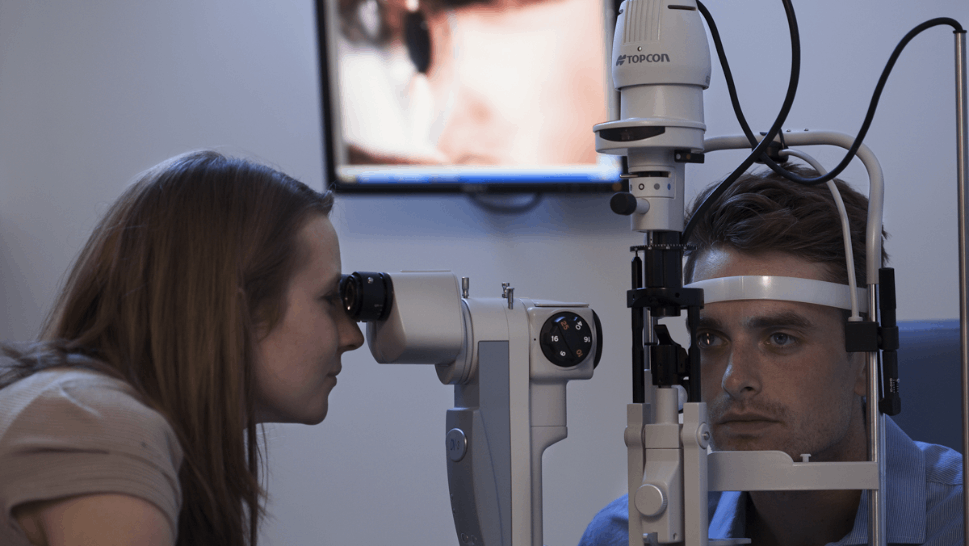What you need to know
Slit Lamp Viewing:
• Diffuse beam • Medium magnification (16x) • Direct illumination
Describing Clinical Appearance:

- Position: nasal/temporal
- Grade 0: Normal
- Grade 1: Trace, slightly raised area <0.5mm
- Grade 2: Mild, slightly raised area 0.5-2.5mm
- Grade 3: Moderate raised area >2.5mm
- Grade 4: Severe, highly vascular elevated lesion
Best Practice: Document and describe Pinguecula as accurately as possible on patient record and if possible take an image for comparison at next visit. Monitor as necessary.
Incidence:
- Unknown, increases with age
- Not CL related, although may be aggravated by lens edge
Aetiology:
- Degenerative sub-epithelial collagen often associated with calcification
- Associated with excessive exposure to UV radiation and hot, dry, windy climates.
Symptoms:
-
Typically none although may cause dryness and discomfort with CL wear
Signs:
-
Raised yellowish nodule on bulbar conjunctiva (nasally and/or temporal adjacent to limbus)
What you need to recommend to your patients
Management:
- Not a contraindication for CL wear
- Avoid mechanical disturbance for comfort reasons
- Ocular lubricants can be helpful
- Use of UV protection with wrap-around sunglasses to prevent further deterioration
Prognosis:
- Generally remains constant, not affected by contact lens wear
- If inflamed may require medical treatment
Differential Diagnosis:
- Pterygium, neovascularisation, superior limbic keratoconjunctivitis (SLK), vascularised limbal keratitis, keratitis, CLARE or tight lens syndrome, uveitis, acute glaucoma, intra-ocular infection

Triangular growth fibrovascular tissue on bulbar conjunctiva, usually, nasal, which encroaches onto cornea and destroys Bowman’s membrane. Often bilateral.

Vascularised limbal keratitis (VLK) — chronic inflammatory complication due to rigid lens design resulting in elevated, semi-opaque epithelial lesion at limbus with conjunctival hyperemia, corneal staining and neovascularisation.
Further reading
- Campbell R, Caroline P. Vascularized limbal keratitis. Spectrum 1996 August: 72
- Jaros P, DeLuise V. Pingueculae and pterygia. Surv Ophthalmol 1988; 33: 41-49
- Linaburg T et al. Systematic Review: Effects of Pterygium and Pingueculum on the Ocular Surface and Efficacy of Surgical Excision. Cornea 2021; 40: 258-267
- Prediger J, Edmondson L. Management of CL patients with pingueculae or pterygia Optom Vis Sci 1993; 70(1): 9-14
- Click here to review our Slit Lamp Techniques Videos
Patient case study
When you have read this guide and our recommended resources, why not take part in the Johnson & Johnson Institute self-assessment quiz to test your clinical diagnostic and management skills. Choose only one answer to each question then check the answers at the foot of the page to see whether it’s correct. Good luck!
History:
Patient RE is a 38-year-old landscape gardener who has worn daily disposable hydrogel lenses for sports and social use only for the past 10 years. At work he spends long hours out of doors. He visits your practice for the first time for his annual check-up and reports no problems with his lenses. His current contact lenses have no UV blocker.

Questions:
1. What slit lamp technique would you use to examine this patient’s bulbar conjunctiva?
A. Sclerotic scatter
B. Diffuse beam, medium illuminations
C. High magnification
D. Indirect illumination
2. What grade would you give to his pinguecula?
A. Grade 1
B. Grade 2
C. Grade 3
D. Grade 4
3. Which of the following environmental conditions are associated with this condition?
A. Air-conditioned offices
B. High levels of UV radiation
C. Cold climates
D. Humid conditions
4. Which of the following recommendations is likely to be the best option?
A. Switch to UV-blocking contact lenses
B. Advise wide-brimmed hat
C. Recommend wraparound sunglasses
D. All of these
Answers:
1. Correct answer is B. Use a diffuse beam, medium magnification and direct illumination to examine the bulbar conjunctiva
2. Correct answer is C. Slit-lamp examination of the bulbar conjunctiva shows a raised yellow area adjacent to the patient’s limbus
3. Correct answer is B. High levels of UV radiation are associated with pinguecula, along with hot, dry, windy climates
4. Correct answer is D. Wraparound sunglasses and UVblocking contact lenses, plus a widebrimmed hat, can help protect eyes from UV transmission*

